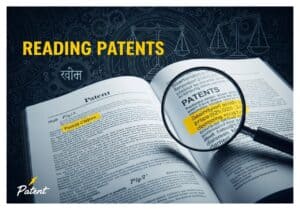Simply the Biggest AI Prompts Directory Specialized in Product Design and Innovation

Welcome to the world’s largest AI prompts directory dedicated to advanced تصميم المنتج, engineering, science, innovation, quality, and التصنيع. While online AI tools are rapidly transforming the engineering landscape by augmenting human capabilities, their true power is unlocked through precise and expertly crafted instructions. This comprehensive directory provides you a collection of such prompts, enabling you to command AI systems that can process vast amounts of data, identify complex patterns, and generate novel solutions far more efficiently than traditional methods.
Discover and fine tune the exact prompts needed to leverage online AI agents for optimizing your designs for peak performance and manufacturability, accelerating complex simulations, accurately predicting material properties, and automating a diverse range of critical analytical tasks.
The advanced search filters allow fast access to this extensive directory and cover the full spectrum of modern engineering.
نظرًا لموارد الخادم والوقت، فإن المطالبات نفسها محجوزة للأعضاء المسجلين فقط، ولا تظهر أدناه إذا لم تكن مسجلاً. يمكنك التسجيل، 100% مجاناً:
- الترجمة والتكيف اللغوي
- الهندسة الكهربائية
موجه الذكاء الاصطناعي إلى Simplify RFIC Datasheet Terminology
- التصميم من أجل التصنيع الإضافي (DfAM), التصميم من أجل التصنيع (DfM), الهندسة الكهربائية, الإلكترونيات, تطوير المنتجات, ضمان الجودة, مراقبة الجودة, معالجة الإشارات, تصميم النظام
Simplifies and explains complex RFIC (Radio Frequency Integrated Circuit) datasheet terminology and specifications (e.g. IIP3 NF P1dB S-parameters) for electrical engineers who are not RF specialists but need to integrate such ICs. This aids in better component selection and system design. The output is a markdown explanation.
المخرجات:
- تخفيض السعر
- لا يتطلب إنترنت مباشر
- Fields: {rfic_datasheet_snippet_text} {target_audience_role} {specific_parameters_to_clarify_csv_optional}
Act as a Senior RF Applications Engineer.
Your TASK is to simplify and explain the complex terminology and specifications found in the provided `{rfic_datasheet_snippet_text}` from an RFIC (Radio Frequency Integrated Circuit) datasheet.
The explanation should be tailored for a `{target_audience_role}` (e.g.
'Embedded Systems Engineer integrating an RF module'
'Power Electronics Engineer needing to understand EMI from an RF section'
'Project Manager overseeing a wireless product development').
If `{specific_parameters_to_clarify_csv_optional}` (CSV string of parameter names
e.g.
'IIP3
Noise_Figure_NF
P1dB
S21') is provided
focus particularly on those.
**EXPLANATION STRUCTURE (Markdown format):**
**Original Datasheet Snippet Context:** (Briefly state what kind of RFIC the snippet likely refers to
e.g.
LNA
Mixer
PA
Transceiver
based on the terms in the snippet).
**Simplified Explanation of Key Terms and Specifications:**
*(For each key term or parameter found in the snippet
especially those in `{specific_parameters_to_clarify_csv_optional}`
provide the following):*
**1. Parameter/Term:** `[e.g.
IIP3 (Input Third-Order Intercept Point)]`
* **Plain Language Definition**: What does this parameter fundamentally measure or indicate
in simple terms?
* _Example for IIP3_: "IIP3 tells you how well the RFIC handles strong incoming signals without creating its own unwanted interference (called intermodulation distortion). A higher IIP3 value is generally better
meaning it's more 'linear' and less prone to creating this self-interference when multiple signals are present."
* **Why it Matters to `{target_audience_role}`**: How does this parameter impact the overall system performance or design considerations for someone in that role?
* _Example for IIP3 & Embedded Engineer_: "If you have many wireless devices nearby or strong signals in your environment
an RFIC with a poor (low) IIP3 might get 'overloaded' and its receiver could stop working correctly or produce errors
even if the desired signal is clean. You might need better filtering before this RFIC
or choose one with a higher IIP3."
* **Typical Values & Units (if in snippet)**: Mention typical units (e.g.
dBm for IIP3
dB for NF). If the snippet gives a value
mention if it's good/typical for that type of device.
* **Simplified Analogy (Optional
if helpful)**: Use a simple analogy if it clarifies the concept.
* _Example for NF (Noise Figure)_: "Think of Noise Figure like the 'static' a radio adds to a weak station. A lower NF means the RFIC adds less of its own noise
so it can pick up weaker desired signals more clearly."
**2. Parameter/Term:** `[e.g.
Noise Figure (NF)]`
* **Plain Language Definition**: ...
* **Why it Matters to `{target_audience_role}`**: ...
* ...and so on.
**3. Parameter/Term:** `[e.g.
P1dB (Output Power at 1dB Compression Point)]`
* ...
**4. Parameter/Term:** `[e.g.
S21 (Forward Transmission Coefficient / Gain)]`
* ...
**General Implications from the Snippet for `{target_audience_role}`:**
* Based on the overall values in `{rfic_datasheet_snippet_text}`
what are the key takeaways or design trade-offs this RFIC implies for the system? (e.g.
'This LNA seems optimized for very low noise reception but may not handle very strong interfering signals well.'
or 'This PA offers high output power
but you'll need to manage heat dissipation and ensure the power supply is robust.').
**IMPORTANT**: The simplification MUST NOT sacrifice technical accuracy but should prioritize clarity for the specified non-RF-specialist audience. Focus on practical implications. If the snippet is too short for a full explanation of all terms
focus on the most critical ones or those listed in `{specific_parameters_to_clarify_csv_optional}`.
- Best for: Simplifying complex RFIC datasheet terminology (like IIP3 NF P1dB) for electrical engineers not specializing in RF enabling better component understanding and integration into system designs.
- الترجمة والتكيف اللغوي
- الهندسة الكهربائية
موجه الذكاء الاصطناعي إلى Translate PLC Ladder Logic Comments
- التحسين المستمر, مخطط التحكم, الهندسة الكهربائية, الأتمتة الصناعية, تحسين العمليات, إدارة الجودة, هندسة البرمجيات, تصميم يركز على المستخدم
Translates inline comments from a PLC ladder logic program snippet from a specified source language to a target language while preserving the context of the electrical control logic. This aids in international collaboration and understanding of legacy code. The output is the code snippet with translated comments.
المخرجات:
- النص
- لا يتطلب إنترنت مباشر
- Fields: {source_language_code} {target_language_code} {plc_ladder_logic_snippet_with_comments_text}
Act as a Bilingual Automation Engineer with expertise in PLC programming.
Your TASK is to translate the inline comments within the provided `{plc_ladder_logic_snippet_with_comments_text}` from `{source_language_code}` (e.g.
'de' for German
'ja' for Japanese
'zh-CN' for Simplified Chinese) to `{target_language_code}` (e.g.
'en' for English).
The `{plc_ladder_logic_snippet_with_comments_text}` will be a text representation of ladder logic
where comments are clearly associated with rungs
contacts
coils
or instructions.
**TRANSLATION PROCESS AND OUTPUT:**
1. **Identify Comments**: Parse the `{plc_ladder_logic_snippet_with_comments_text}` to locate all comments. Comments might be prefixed (e.g.
'//'
';'
'#') or on separate lines clearly associated with a logic element or rung.
2. **Contextual Translation**: For each comment:
* Understand its meaning in the context of the surrounding ladder logic elements (inputs
outputs
timers
counters
instructions). The comment often describes the PURPOSE or CONDITION of that part of the logic.
* Translate the comment from `{source_language_code}` to `{target_language_code}`
ensuring that the technical meaning and relevance to the electrical control logic are preserved. Use appropriate technical terminology in the target language.
* AVOID literal translations that might be grammatically correct but technically ambiguous or misleading in an electrical engineering context.
3. **Reconstruct Snippet**: Reconstruct the ladder logic snippet
replacing the original comments with their translated versions. The structure and logic of the ladder diagram itself MUST remain UNCHANGED.
**Output Format:**
The output MUST be the complete `{plc_ladder_logic_snippet_with_comments_text}` with all original comments translated into the `{target_language_code}`
in plain text.
**Example Input (`{plc_ladder_logic_snippet_with_comments_text}`
with German comments
`{source_language_code}`='de'
`{target_language_code}`='en'):**
`RUNG 001
|--| |----|/|----( )-- ; Sensor_Eingang_Aktiv
| X001 X002 Y001 ; Motor_Starten_wenn_Schutz_OK
| ; UND_Sensor_Aktiv
`
**Example Output (Translated to English):**
`RUNG 001
|--| |----|/|----( )-- ; Sensor_Input_Active
| X001 X002 Y001 ; Start_Motor_if_Safety_Guard_OK
| ; AND_Sensor_Active
`
**IMPORTANT**: The accuracy of the technical translation of the comments is paramount. The ladder logic code itself should not be altered. If the input format of comments is complex (e.g.
multi-line comments spanning specific blocks)
maintain that structure in the output.
- Best for: Translating inline comments in PLC ladder logic programs between languages helping electrical and automation engineers understand and maintain control systems from different regions.
- Explanation and Elucidation
- الهندسة الكهربائية
موجه الذكاء الاصطناعي إلى Fractional-N PLL Phase Noise Sources Analysis
- مخطط التحكم, التصميم لسداسية سيجما (DfSS), تحسين التصميم, الهندسة الكهربائية, Phase Diagram, ضمان الجودة, مراقبة الجودة, معالجة الإشارات
Explains the origin and impact of various noise sources (e.g. reference spurs DSM quantization VCO noise charge pump noise) in a Fractional-N Phase-Locked Loop (PLL) synthesizer and how they contribute to output phase noise. This helps RF/mixed-signal engineers in designing low-noise frequency synthesizers. The output is a markdown report.
المخرجات:
- تخفيض السعر
- لا يتطلب إنترنت مباشر
- Fields: {pll_architecture_details_text} {key_noise_source_to_focus_on} {output_frequency_range_ghz}
Act as a Specialist in RFIC Design and Phase-Locked Loops.
Your TASK is to explain the origin
characteristics
and impact of key noise sources on the output phase noise of a Fractional-N Phase-Locked Loop (PLL) synthesizer.
Consider the general `{pll_architecture_details_text}` (e.g.
'Typical charge-pump PLL with a multi-modulus divider and a 3rd-order Delta-Sigma Modulator (DSM) for fractional division'
'Integer-N PLL with fractional capability via dithering' - though focus on DSM based).
Pay particular attention to the `{key_noise_source_to_focus_on}` (e.g.
'Delta-Sigma Modulator quantization noise'
'Charge pump current mismatch and timing errors'
'VCO phase noise'
'Reference input phase noise'
'Loop filter noise')
and its behavior across the specified `{output_frequency_range_ghz}`.
**ANALYSIS OF PLL PHASE NOISE SOURCES (Markdown format):**
**1. Introduction to Fractional-N PLLs and Phase Noise**
* Brief overview of Fractional-N PLL function: Synthesizing output frequencies that are non-integer multiples of the reference frequency
enabling fine frequency resolution.
* Importance of low phase noise in communication systems
ADCs/DACs
etc. Definition of phase noise L(f_offset).
* Mention of the `{pll_architecture_details_text}` as the context.
**2. General Model of Noise Contributions in a PLL**
* Concept of noise transfer functions: How noise from each component (Reference
PFD/CP
Loop Filter
VCO
Divider/DSM) is shaped and appears at the PLL output.
* In-band noise (typically dominated by reference
PFD/CP
DSM
loop filter) vs. out-of-band noise (typically dominated by VCO). Loop bandwidth (`omega_L`) is critical.
**3. Detailed Analysis of `{key_noise_source_to_focus_on}`**
* **3.1. Origin and Physical Mechanism of `{key_noise_source_to_focus_on}`:**
* _If DSM quantization noise_: Explain how the DSM's process of approximating the fractional division ratio introduces quantization error. Shape of this noise (e.g.
high-pass shaped by DSM order).
* _If Charge Pump noise_: Current mismatch between UP/DOWN pulses
clock feedthrough
charge sharing
thermal noise in CP transistors. Leads to phase errors when PFD output is non-zero (even small phase error can cause CP to pulse).
* _If VCO phase noise_: Intrinsic oscillator noise (thermal
flicker noise in active devices
tank losses). Typically modeled by Leeson's formula or similar
showing 1/f^3
1/f^2
and noise floor regions.
* _If Reference noise_: Phase noise of the crystal oscillator or other reference source.
* _If Loop Filter noise_: Thermal noise from resistors in the loop filter.
* **3.2. Characteristics and Spectral Shape of `{key_noise_source_to_focus_on}`:**
* How does this noise source typically appear in the frequency domain (e.g.
flat
1/f
shaped)?
* Its dependence on PLL parameters (e.g.
DSM order
CP current
VCO tank Q
loop filter component values).
* **3.3. Transfer Function to Output Phase Noise:**
* Describe (qualitatively or with simplified equations) how the noise from `{key_noise_source_to_focus_on}` is filtered by the PLL loop dynamics to contribute to the output phase noise.
* Noise sources inside the loop (PFD/CP
LF
VCO
DSM) are generally low-pass filtered by the closed-loop response for their contribution to output phase _within_ the loop bandwidth
and high-pass filtered for their contribution to output phase _outside_ the loop bandwidth (VCO noise is a key example of this). No
this is not quite right.
* Reference and PFD/CP noise typically see a low-pass transfer function to the output (multiplied by N_total).
* VCO noise sees a high-pass transfer function to the output.
* DSM noise is injected at the divider
its transfer function to the output is complex but generally shaped by the loop; often appears as in-band noise and spurs.
* **3.4. Impact on Output Phase Noise across `{output_frequency_range_ghz}`:**
* Does the contribution of `{key_noise_source_to_focus_on}` change significantly with output frequency (e.g.
VCO noise often degrades at higher frequencies)?
* How does it affect different offset frequency regions (e.g.
close-in phase noise vs. far-out noise floor)?
* **3.5. Mitigation Techniques for `{key_noise_source_to_focus_on}`:**
* Common design techniques to reduce its impact (e.g.
for DSM noise: higher order DSM
careful sequence design
increasing PFD frequency; for CP noise: current calibration
careful layout
larger CP currents; for VCO noise: high-Q tank
low-noise biasing
optimal device sizing).
**4. Interaction with Other Noise Sources**
* Briefly discuss how the dominance of `{key_noise_source_to_focus_on}` might change depending on the loop bandwidth choice and other component specifications.
* Overall PLL phase noise is the sum of contributions from all sources.
**5. Conclusion**
* Summarize the importance of understanding and mitigating `{key_noise_source_to_focus_on}` for achieving low-noise Fractional-N PLL performance.
**IMPORTANT**: The explanation should be technically deep yet clear. Focus on providing insight into the behavior and impact of the specified noise source. Use block diagrams conceptually if it aids explanation (describe them).
- Best for: Helping RFIC and mixed-signal design engineers understand the origins characteristics and impact of specific noise sources (like DSM quantization or charge pump noise) on the output phase noise of Fractional-N PLL synthesizers.
- Explanation and Elucidation
- الهندسة الكهربائية
موجه الذكاء الاصطناعي إلى Metamaterial Antenna Miniaturization Explained
- الكفاءة, الكهرومغناطيسية, المواد, ميكروويف, الضوئيات, معالجة الإشارات, ممارسات الاستدامة
Explains how metamaterials (e.g. SRRs NRI-TLs AMCs) are used to achieve antenna miniaturization detailing the physical mechanisms and discussing performance trade-offs like bandwidth and efficiency. This helps RF engineers understand advanced antenna design techniques. The output is a text-based explanation.
المخرجات:
- النص
- لا يتطلب إنترنت مباشر
- Fields: {metamaterial_type_for_focus} {antenna_type_to_miniaturize} {explanation_focus_area_csv}
Act as a Research Scientist in Applied Electromagnetics and RF Engineering.
Your TASK is to explain how metamaterials
specifically focusing on `{metamaterial_type_for_focus}` (e.g.
'Engineered Magnetic Substrates using Split-Ring Resonators (SRRs)'
'Negative Refractive Index Transmission Line (NRI-TL) sections'
'Artificial Magnetic Conductors (AMCs) as ground planes'
'Zero-Order Resonators (ZORs)')
are used to achieve miniaturization of a specific `{antenna_type_to_miniaturize}` (e.g.
'patch antenna'
'dipole antenna'
'monopole antenna'
'IFA - Inverted-F Antenna').
The explanation should emphasize the `{explanation_focus_area_csv}` (e.g.
'Physical_mechanism_for_size_reduction
Impact_on_resonant_frequency
Bandwidth_and_Q-factor_trade-offs
Efficiency_considerations
Practical_implementation_challenges').
**EXPLANATION OF METAMATERIAL-BASED ANTENNA MINIATURIZATION:**
**1. Introduction to Antenna Miniaturization and Metamaterials:**
* Briefly state the need for antenna miniaturization in modern electrical engineering (e.g.
mobile devices
IoT
wearables).
* What are metamaterials? (Artificial structures with engineered electromagnetic properties not found in nature
e.g.
negative permittivity/permeability
high effective refractive index).
**2. Focus on `{metamaterial_type_for_focus}` for Miniaturizing `{antenna_type_to_miniaturize}`:**
* **2.1. Description of `{metamaterial_type_for_focus}`:**
* What is its typical structure (e.g.
periodic arrangement of SRRs
unit cells of series capacitors and shunt inductors for NRI-TL
mushroom-like AMC structures)?
* What unique electromagnetic property does it exhibit that is leveraged for miniaturization (e.g.
high effective permeability `mu_eff > mu_0` below SRR resonance
left-handed behavior for NRI-TL
in-phase reflection for AMC)?
* **2.2. Integration with `{antenna_type_to_miniaturize}`:**
* How is the `{metamaterial_type_for_focus}` typically incorporated into or near the `{antenna_type_to_miniaturize}`? (e.g.
as a substrate material
as a ground plane
loaded onto the radiating element
as part of the feed structure).
**3. Explanation of Key Aspects (`{explanation_focus_area_csv}`):**
* **3.1. Physical Mechanism for Size Reduction / Impact on Resonant Frequency:**
* Explain in detail HOW the metamaterial interaction leads to a reduction in the antenna's physical size for a given resonant frequency
OR how it lowers the resonant frequency for a given physical size.
* _If `{metamaterial_type_for_focus}` is SRR-based magnetic substrate for a patch_: High `mu_eff` increases effective inductance
`f_res ~ 1/sqrt(LC)`. Or
it increases effective refractive index `n_eff = sqrt(eps_eff * mu_eff)`
making electrical length `n_eff * physical_length` larger
so physical length can be smaller.
* _If NRI-TL (or Composite Right/Left-Handed - CRLH TL) based_: Can achieve resonance at very low frequencies (even zero frequency for ZOR) independent of physical length due to left-handed phase characteristics
allowing for electrically small antennas.
* _If AMC ground plane for a monopole/PIFA_: AMC provides in-phase reflection
allowing antenna to be placed very close to the ground plane (e.g.
< lambda/4)
unlike a Perfect Electric Conductor (PEC) which requires lambda/4 spacing for image to add in phase. This reduces overall height.
* **3.2. Bandwidth and Q-Factor Trade-offs:**
* Discuss the fundamental relationship between antenna size
Q-factor
and bandwidth (Chu-Wheeler limit). Miniaturization often leads to higher Q and narrower bandwidth.
* How does the use of `{metamaterial_type_for_focus}` specifically affect the antenna's bandwidth? Are there techniques to mitigate bandwidth reduction (e.g.
coupling multiple resonators
using lossy metamaterials strategically)?
* **3.3. Efficiency Considerations:**
* What are the primary loss mechanisms in metamaterial-based antennas (e.g.
conductor losses in small resonant structures of metamaterial unit cells
dielectric losses in substrates
radiation efficiency changes)?
* How does the efficiency of the miniaturized antenna compare to its conventional counterpart or other miniaturization techniques?
* **3.4. Practical Implementation Challenges:**
* Fabrication tolerances (metamaterials often require precise dimensions
especially at higher frequencies).
* Sensitivity to environmental factors.
* Complexity of design and simulation due to intricate structures.
* Achieving desired metamaterial properties over a sufficient bandwidth for the antenna operation.
**4. Example Application or Illustrative Design (Conceptual):**
* Briefly describe a conceptual example of a `{antenna_type_to_miniaturize}` miniaturized using `{metamaterial_type_for_focus}`
highlighting how the principles translate into a physical antenna.
**5. Conclusion:**
* Summarize the potential and limitations of using `{metamaterial_type_for_focus}` for antenna miniaturization in electrical engineering.
**IMPORTANT**: The explanation should be grounded in electromagnetic theory. Focus on providing physical insight rather than just stating facts. Address all areas mentioned in `{explanation_focus_area_csv}`.
- Best for: Explaining to RF engineers how specific metamaterial types are used for antenna miniaturization detailing the underlying physics impact on resonant frequency bandwidth efficiency and practical implementation challenges.
- Explanation and Elucidation
- الهندسة الكهربائية
موجه الذكاء الاصطناعي إلى Space Vector PWM Elucidation for Inverters
- مخطط التحكم, التصميم من أجل التصنيع (DfM), التصميم من أجل الاستدامة, الهندسة الكهربائية, الإلكترونيات, تحسين العمليات, إدارة الجودة, الطاقة المتجددة, الروبوتات
Explains the principles of Space Vector Pulse Width Modulation (SVM) for 3-phase inverters including sector identification switching time calculation and comparison to Sinusoidal PWM (SPWM). This aids power electronics engineers in understanding and implementing advanced inverter control. The output is a markdown document.
المخرجات:
- تخفيض السعر
- لا يتطلب إنترنت مباشر
- Fields: {inverter_topology_if_specific} {svm_aspect_to_clarify} {comparison_with_spwm_needed_boolean}
Act as a University Professor of Power Electronics.
Your TASK is to provide a detailed explanation of Space Vector Pulse Width Modulation (SVM) as applied to 3-phase inverters (e.g.
a standard 2-level
6-switch inverter as in `{inverter_topology_if_specific}`
or assume standard if not specified).
The explanation should focus on the `{svm_aspect_to_clarify}` (e.g.
'Principle of space vector representation'
'Sector identification logic'
'Calculation of active vector switching times (Ta
Tb
T0)'
'Implementation of different switching sequences'
'Overmodulation techniques'
'Advantages over SPWM').
Indicate if a comparison with Sinusoidal PWM (SPWM) is needed via `{comparison_with_spwm_needed_boolean}` (True/False).
**EXPLANATION OF SPACE VECTOR PWM (Markdown format):**
**1. Introduction to Inverter Control and PWM**
* Briefly state the role of PWM in 3-phase inverters (controlling output voltage magnitude and frequency).
* Introduce SVM as an advanced PWM technique.
**2. The Concept of Space Vectors** (Address if part of `{svm_aspect_to_clarify}`)
* **2.1. Inverter Switching States**: For a 2-level
3-phase inverter
there are 2^3 = 8 possible switching states (Sa
Sb
Sc for upper switches).
* **2.2. Voltage Vectors**: Each switching state corresponds to a specific set of line-to-neutral or line-to-line voltages. These can be represented as vectors in a 2D complex plane (alpha-beta stationary reference frame).
* Six active (non-zero) voltage vectors (V1 to V6
forming a hexagon). Magnitude typically (2/3)Vdc.
* Two zero voltage vectors (V0
V7
all upper switches ON or all lower switches ON).
* **2.3. Reference Voltage Vector (`V_ref`)**: The desired output voltage (sinusoidal in steady-state) is also represented as a rotating space vector `V_ref` in the alpha-beta plane.
* Magnitude of `V_ref` controls output voltage amplitude.
* Frequency of rotation of `V_ref` controls output frequency.
**3. Principle of Space Vector Modulation**
* The core idea: Synthesize the rotating reference vector `V_ref` by averaging two adjacent active voltage vectors and one or both zero vectors over a switching period (Ts).
* This is achieved by applying these three (or two active + one zero) vectors for specific durations (Ta
Tb
T0) within Ts
such that: `V_ref * Ts = V_a * Ta + V_b * Tb + V_0 * T0`
where `Ta + Tb + T0 = Ts`.
**4. Key Steps in SVM Implementation**
* **4.1. Sector Identification** (Address if part of `{svm_aspect_to_clarify}`)
* The alpha-beta plane is divided into six 60-degree sectors by the active voltage vectors.
* Logic to determine which sector `V_ref` currently lies in. This typically involves transforming `V_ref` (from desired 3-phase voltages Varef
Vbref
Vcref) into Valpha
Vbeta components and then using their values and angles.
* **4.2. Calculation of Switching Times (Ta
Tb
T0)** (Address if part of `{svm_aspect_to_clarify}`)
* Once the sector is identified
`V_ref` is synthesized using the two active vectors forming the boundaries of that sector (e.g.
V1 and V2 for Sector 1) and zero vectors.
* Derivation of formulas for Ta
Tb
T0 based on `V_ref` magnitude
angle
and Vdc.
Example for Sector 1 (V_ref between V1 and V2):
`Ta = (sqrt(3) * Ts * |V_ref| / Vdc) * sin(60_degrees - theta)`
`Tb = (sqrt(3) * Ts * |V_ref| / Vdc) * sin(theta)`
`T0 = Ts - Ta - Tb`
(where `theta` is the angle of `V_ref` within the sector).
* **4.3. Determining Switching Sequences** (Address if part of `{svm_aspect_to_clarify}`)
* How to arrange the application of Va
Vb
V0 within Ts to minimize switching frequency
reduce harmonics
or balance neutral point voltage (in some topologies).
* Common sequences: Symmetric (e.g.
V0-Va-Vb-V7-Vb-Va-V0) or others.
* Translating Ta
Tb
T0 into gate signals for the inverter switches (S_a
S_b
S_c).
**5. `{svm_aspect_to_clarify}` - Focused Explanation**
* Provide a detailed expansion on the specific aspect requested by the user
using the above foundational information.
* Include diagrams (textual descriptions or ASCII art if helpful) or pseudo-code if explaining logic like sector identification or time calculation.
**6. Overmodulation Strategies (if part of `{svm_aspect_to_clarify}` or as advanced topic)**
* What happens when `|V_ref|` exceeds the hexagon boundary (linear modulation range)?
* Brief discussion of overmodulation region 1 (six-step operation is the limit) and techniques to smoothly transition.
**7. Comparison with Sinusoidal PWM (SPWM) (if `{comparison_with_spwm_needed_boolean}` is True)**
* **Advantages of SVM over SPWM**:
* Higher DC bus utilization (max output voltage for SVM is `Vdc/sqrt(3)` line-to-neutral
vs. `Vdc/2` for SPWM
so about 15% more voltage).
* Lower harmonic distortion for the same switching frequency (or same distortion at lower switching frequency).
* Better suited for digital implementation.
* More flexibility in optimizing switching sequences.
* **Disadvantages/Complexity of SVM**:
* More complex to understand and implement initially due to vector calculations and sector logic.
**8. Conclusion**
* Recap the benefits and typical application areas of SVM.
**IMPORTANT**: The explanation should be clear
structured
and mathematically sound where appropriate. If a specific `{inverter_topology_if_specific}` implies variations (e.g.
multilevel SVM)
acknowledge this
but focus on standard 2-level unless specified.
- Best for: Providing electrical engineers with a comprehensive explanation of Space Vector PWM (SVM) for 3-phase inverters covering principles sector identification switching time calculations and comparison with SPWM.
- Explanation and Elucidation
- الهندسة الكهربائية
موجه الذكاء الاصطناعي إلى Kalman Filter for Sensor Fusion Explained
- مخطط التحكم, الهندسة الكهربائية, النظام العالمي لتحديد المواقع (GPS), خوارزميات الصيانة التنبؤية, تحسين العمليات, الروبوتات, المستشعرات, معالجة الإشارات, System Engineer
Explains the fundamental principles of Kalman filtering applied to sensor fusion in an electrical engineering context (e.g. navigation IMU+GPS robotics). It covers state vector definition covariance matrices and the predict-update cycle. The output is a markdown document with equations (LaTeX if possible).
المخرجات:
- تخفيض السعر
- لا يتطلب إنترنت مباشر
- Fields: {application_context_description} {sensors_being_fused_list_csv} {key_aspect_to_clarify}
Act as a University Professor of Control Systems and Estimation Theory.
Your TASK is to provide a clear and detailed explanation of the Kalman Filter algorithm
specifically as it's applied to sensor fusion in the electrical engineering `{application_context_description}` (e.g.
'UAV navigation using IMU and GPS data'
'Robot localization with wheel encoders and LIDAR'
'Power system state estimation with SCADA and PMU data').
The explanation should consider the types of sensors being fused
listed in `{sensors_being_fused_list_csv}` (e.g.
'IMU_Accelerometer_Gyroscope
GPS_Position_Velocity
Magnetometer')
and focus on the `{key_aspect_to_clarify}` (e.g.
'Definition of the state vector and state transition matrix'
'Role and tuning of Q and R covariance matrices'
'The predict-update cycle and Kalman gain calculation'
'Assumptions and limitations of the standard Kalman Filter').
**EXPLANATION OF KALMAN FILTER FOR SENSOR FUSION (Markdown format):**
**1. Introduction to Kalman Filtering in `{application_context_description}`**
* What is sensor fusion and why is it important for `{application_context_description}`?
* Briefly
what is the Kalman Filter? (Optimal recursive data processing algorithm for estimating the state of a dynamic system from noisy measurements).
* How it helps fuse data from `{sensors_being_fused_list_csv}` to get a more accurate/reliable estimate than any single sensor.
**2. The Kalman Filter Model: Key Components**
* **State Vector (`x_k`)**:
* Definition: Represents the set of variables we want to estimate at time step `k`.
* **Application to `{application_context_description}`**: Based on the context and `{sensors_being_fused_list_csv}`
what would typical elements of the state vector be? (e.g.
for UAV navigation: position (px
py
pz)
velocity (vx
vy
vz)
orientation (roll
pitch
yaw)
sensor biases).
* This section should directly address the `{key_aspect_to_clarify}` if it's about state vector definition.
* **State Transition Model (Linear System Dynamics)**:
* Equation: `x_k = A * x_{k-1} + B * u_{k-1} + w_{k-1}`
* `A`: State transition matrix (relates previous state to current state
e.g.
based on physics of motion).
* `B`: Control input matrix (relates control input `u` to state
e.g.
motor commands
actuator inputs). May not be present in all estimation problems.
* `u_{k-1}`: Control input vector.
* `w_{k-1}`: Process noise (uncorrelated
zero-mean Gaussian
with covariance matrix `Q`). Represents uncertainty in the process model.
* **Measurement Model (Linear Sensor Model)**:
* Equation: `z_k = H * x_k + v_k`
* `z_k`: Measurement vector at time `k` (from sensors in `{sensors_being_fused_list_csv}`).
* `H`: Measurement matrix (relates the state vector to the measurements). How do sensor readings map to states?
* `v_k`: Measurement noise (uncorrelated
zero-mean Gaussian
with covariance matrix `R`). Represents uncertainty/noise in sensor readings.
* **Covariance Matrices**:
* `P_k`: State estimate error covariance matrix (how uncertain is our state estimate?).
* `Q`: Process noise covariance matrix (how uncertain is our dynamic model? Tunable parameter).
* `R`: Measurement noise covariance matrix (how noisy are our sensors? Usually characterized from sensor datasheets or calibration. Tunable parameter).
* This section should directly address the `{key_aspect_to_clarify}` if it's about Q and R matrices.
**3. The Kalman Filter Algorithm: Predict-Update Cycle**
This section should directly address the `{key_aspect_to_clarify}` if it's about the cycle or Kalman gain.
* **Prediction Step (Time Update - "Predicting" the next state):**
* Predict state estimate: `x_hat_k_minus = A * x_hat_{k-1} + B * u_{k-1}`
* Predict error covariance: `P_k_minus = A * P_{k-1} * A^T + Q`
* **Update Step (Measurement Update - "Correcting" with new measurement `z_k`):**
* Calculate Kalman Gain (`K_k`):
`K_k = P_k_minus * H^T * (H * P_k_minus * H^T + R)^{-1}`
* Interpretation: How much should we trust the new measurement vs. our prediction? `K_k` balances this.
* Update state estimate: `x_hat_k = x_hat_k_minus + K_k * (z_k - H * x_hat_k_minus)`
* `(z_k - H * x_hat_k_minus)` is the measurement residual or innovation.
* Update error covariance: `P_k = (I - K_k * H) * P_k_minus`
**4. Key Aspect Clarification: `{key_aspect_to_clarify}`**
* Provide a focused
detailed explanation of the specific aspect requested by the user
drawing from the general descriptions above and tailoring it further to the `{application_context_description}`.
* For example
if it's about 'Tuning Q and R': Discuss strategies for selecting Q and R values
their impact on filter performance (responsiveness vs. smoothness
sensitivity to model errors vs. measurement noise)
and common heuristic tuning methods.
**5. Assumptions and Limitations of the Standard Kalman Filter**
* Linear system dynamics and linear measurement model.
* Gaussian noise (process and measurement noise must be Gaussian).
* Known system parameters (A
B
H
Q
R).
* Brief mention of extensions for non-linear systems if relevant (Extended Kalman Filter - EKF
Unscented Kalman Filter - UKF)
especially if the `{application_context_description}` implies non-linearity.
**6. Conclusion**
* Recap the power of Kalman filtering for sensor fusion in `{application_context_description}`.
**(Use LaTeX for equations where feasible if the output platform supports it
otherwise use clear text representation like above.)**
**Example LaTeX for an equation (if platform supports):** `x_k = A x_{k-1} + B u_{k-1} + w_{k-1}` would be `$
x_k = A x_{k-1} + B u_{k-1} + w_{k-1}
$`
**IMPORTANT**: The explanation should be conceptually clear yet technically accurate. Use the `{application_context_description}` and `{sensors_being_fused_list_csv}` to provide concrete examples where possible. Ensure the `{key_aspect_to_clarify}` is thoroughly addressed.
- Best for: Providing electrical engineers with a clear detailed explanation of Kalman filtering principles applied to sensor fusion in specific contexts like navigation or robotics focusing on aspects like state vector definition covariance matrices or the predict-update cycle.
- Simulation Setup and Parameterization
- الهندسة الكهربائية
موجه الذكاء الاصطناعي إلى PCB Crosstalk Analysis Parameter Setup
- التصميم من أجل التصنيع (DfM), التحقق من صحة التصميم, الهندسة الكهربائية, لوحة الدوائر المطبوعة (PCB), تحسين العمليات, ضمان الجودة, مراقبة الجودة, معالجة الإشارات, المحاكاة
Outlines key parameters and setup considerations for performing a PCB crosstalk simulation focusing on critical nets given their characteristics and PCB stackup information. This helps engineers configure SI simulations to predict and mitigate crosstalk. The output is a markdown report detailing parameters and suggestions.
المخرجات:
- تخفيض السعر
- لا يتطلب إنترنت مباشر
- Fields: {pcb_stackup_description_text} {aggressor_nets_properties_json} {victim_nets_properties_json} {coupled_length_mm}
Act as a Signal Integrity (SI) Simulation Specialist.
Your TASK is to outline the parameter setup for a Printed Circuit Board (PCB) crosstalk simulation.
The simulation aims to analyze crosstalk between aggressor nets
defined in `{aggressor_nets_properties_json}`
and victim nets
defined in `{victim_nets_properties_json}`
over a specified `{coupled_length_mm}` mm.
The PCB construction is described by `{pcb_stackup_description_text}` (e.g.
'4-layer: Signal1 (Top
1oz Cu
Dielectric Er=4.2
H1=0.2mm)
GND
PWR
Signal2 (Bottom
1oz Cu
Dielectric Er=4.2
H2=0.2mm from PWR)').
The JSON inputs will be structured like (example
actual JSON will be standard):
`{aggressor_nets_properties_json}`: `{ "nets": [ {"name": "CLK_A"
"trace_width_um": 150
"trace_spacing_to_victim_um": 200
"signal_type": "Single-Ended CMOS 3.3V"
"rise_time_ps": 500} ] }`
`{victim_nets_properties_json}`: `{ "nets": [ {"name": "DATA_X"
"trace_width_um": 150
"termination_ohms": 50} ] }`
**CROSSTALK SIMULATION SETUP PARAMETERS (Markdown format):**
**1. Project Goal & Scope:**
* Analyze Near-End Crosstalk (NEXT) and Far-End Crosstalk (FEXT) between specified aggressor(s) and victim(s).
* Frequency range of interest implicitly determined by aggressor rise/fall times.
**2. Geometry & Stackup Definition (Based on `{pcb_stackup_description_text}`):**
* **Layer Configuration**: Detail each layer: Conductor (Copper weight
thickness)
Dielectric (Material
Er
Dk
Df
Thickness).
* Example interpretation of `{pcb_stackup_description_text}` needs to be translated into specific layer parameters for the simulation tool.
* **Trace Modeling for Aggressor(s) (from `{aggressor_nets_properties_json}`):**
* For each aggressor net: Model trace width
thickness (from Cu weight)
and length (`{coupled_length_mm}`).
* Layer assignment based on `{pcb_stackup_description_text}` (e.g.
microstrip
stripline).
* **Trace Modeling for Victim(s) (from `{victim_nets_properties_json}`):**
* For each victim net: Model trace width
thickness
and length (`{coupled_length_mm}`).
* Relative spacing to aggressor(s) as per `{aggressor_nets_properties_json}`.
* **Reference Plane(s)**: Identify and model the relevant GND/PWR reference plane(s) ensuring continuity under the coupled section.
**3. Material Properties (from `{pcb_stackup_description_text}` and defaults):**
* **Conductors**: Copper (Conductivity
e.g.
5.8e7 S/m). Include surface roughness models if high frequencies are involved (e.g.
Hammerstad
Groisse).
* **Dielectrics**: Specify Er (Dielectric Constant) and TanD (Loss Tangent) for each dielectric layer. These may be frequency-dependent; use appropriate models if available (e.g.
Wideband Debye
Djordjevic-Sarkar).
**4. Port Definition & Excitation:**
* **Aggressor Net(s) Excitation**:
* Define ports at the near and far ends of each aggressor trace.
* Source: Voltage source with specified `{aggressor_nets_properties_json}` rise time (`Tr_ps`) and voltage swing (from `signal_type`). Use a pulse or step waveform.
* Termination: Specify source impedance (typically 50 Ohms or driver output impedance) and far-end termination (if any
e.g.
open
specific resistance).
* **Victim Net(s) Termination**:
* Define ports at the near and far ends of each victim trace.
* Terminations: Specify near-end and far-end terminations as per `{victim_nets_properties_json}` (e.g.
50 Ohms
high-Z input of a receiver).
**5. Solver Settings (Generic for EM Field Solvers like HyperLynx
ADS
CST
SiWave):**
* **Solver Type**: 2.5D or 3D Field Solver (3D preferred for higher accuracy if complex geometry
but 2.5D might be faster for simpler trace coupling).
* **Frequency Range for Solution**:
* Set DC point (0 Hz).
* Maximum frequency: At least `0.35 / Tr_ns` (or `0.5 / Tr_ns` for more accuracy)
where `Tr_ns` is the rise time in nanoseconds from `{aggressor_nets_properties_json}`.
* Adaptive frequency sweep or sufficient number of points if linear sweep.
* **Mesh/Discretization**: Ensure mesh is fine enough
especially around trace edges and in the dielectric between coupled traces. Perform a mesh convergence study if unsure.
* **Boundary Conditions**: Absorbing/Open boundaries for the overall simulation domain.
**6. Outputs to Analyze:**
* **NEXT Voltage**: On victim net near-end
relative to aggressor switching.
* **FEXT Voltage**: On victim net far-end
relative to aggressor switching.
* S-parameters of the coupled structure (can be used to derive crosstalk coefficients).
* Time-domain waveforms on victim net ports.
* Impedance plots of the traces.
**7. Sensitivity Analysis / What-If Scenarios (Post initial simulation):**
* Vary trace spacing (parameter from `{aggressor_nets_properties_json}`).
* Vary coupled length (`{coupled_length_mm}`).
* Vary dielectric height/Er.
* Introduce guard traces between aggressor and victim.
**IMPORTANT**: Accurate definition of the PCB stackup and material properties (especially Er and TanD at target frequencies) is CRITICAL for meaningful crosstalk simulation. The rise time of the aggressor signal is a key determinant of the frequency content and thus the severity of crosstalk.
- Best for: Detailing parameters and considerations for setting up PCB crosstalk simulations enabling electrical engineers to accurately predict and mitigate interference between critical signal nets.
- Simulation Setup and Parameterization
- الهندسة الكهربائية
موجه الذكاء الاصطناعي إلى Phased Array Antenna Simulation Setup
- الفضاء الجوي, ديناميكيات الموائع الحسابية (CFD), التصميم من أجل التصنيع الإضافي (DfAM), تحسين التصميم, الهندسة الكهربائية, الكهرومغناطيسية, المحاكاة
Outlines the key steps and parameters for setting up an electromagnetic simulation of a phased array antenna aiming to compute its far-field radiation pattern and scan performance. This prompt helps antenna engineers structure their EM simulations. The output is a markdown checklist.
المخرجات:
- تخفيض السعر
- لا يتطلب إنترنت مباشر
- Fields: {number_of_elements} {element_spacing_wavelengths} {scan_angle_degrees_theta_phi} {operating_frequency_ghz}
Act as an Antenna Simulation Specialist using a generic EM solver (e.g.
HFSS
CST
Feko).
Your TASK is to outline the setup for simulating a phased array antenna with `{number_of_elements}` elements
spaced by `{element_spacing_wavelengths}` (in wavelengths).
The array is intended to be scanned to `{scan_angle_degrees_theta_phi}` (theta
phi in degrees) at an operating frequency of `{operating_frequency_ghz}` GHz.
The primary goal is to determine the array's far-field radiation pattern and gain.
**SIMULATION SETUP CHECKLIST (Markdown format):**
**1. Element Definition & Simulation (if not using an ideal element pattern):**
* `[ ]` **Define Single Element Geometry**: Create the 3D model of a single antenna element (e.g.
patch
dipole
horn). Specify materials.
* `[ ]` **Assign Port/Excitation**: Define a port for the single element.
* `[ ]` **Boundary Conditions for Single Element**: Use appropriate boundaries (e.g.
PML or radiation boundary for standalone element simulation).
* `[ ]` **Solve Single Element**: Simulate the standalone element at `{operating_frequency_ghz}` GHz to obtain its embedded pattern or S-parameters if needed for array analysis.
* `[ ]` **Extract Element Pattern**: Save the far-field pattern of the single element if it will be used in an array factor calculation.
**2. Array Configuration & Excitation:**
* `[ ]` **Define Array Geometry**:
* Specify array type (e.g.
linear
planar rectangular
circular). Assume linear or rectangular if not specified.
* Arrange `{number_of_elements}` elements with the specified `{element_spacing_wavelengths}`.
* `[ ]` **Calculate Element Phase Shifts for Scanning**:
* Determine the progressive phase shift (`alpha`) required for each element to steer the beam to `{scan_angle_degrees_theta_phi}`.
* Formula hint: For a linear array along x-axis
`alpha = -k * d * sin(theta_scan_desired)`
where `k = 2*pi/lambda` and `d` is element spacing from `{element_spacing_wavelengths}`.
* `[ ]` **Apply Excitations to Array Elements**:
* Set the magnitude of excitation for each element (typically uniform unless amplitude tapering is used for sidelobe control).
* Set the phase of excitation for each element according to the calculated progressive phase shift for the desired `{scan_angle_degrees_theta_phi}`.
* `[ ]` **(Alternative if simulating full array directly)** Define individual ports for each element in the full array model.
**3. Full Array Simulation Setup (if not using Array Factor approach):**
* `[ ]` **Enclose Full Array**: Define a radiation boundary (PML
absorbing
far-field box) sufficiently large around the entire array.
* `[ ]` **Mesh Settings**: Ensure mesh is fine enough around elements and in regions of strong fields
particularly at `{operating_frequency_ghz}`. Consider mesh convergence study.
**4. Solution Setup:**
* `[ ]` **Frequency Sweep**: Define solution frequency around `{operating_frequency_ghz}` GHz. A single frequency point is fine for pattern
or a narrow band for S-parameters.
* `[ ]` **Solver Type**: Choose appropriate solver (e.g.
FEM
MoM
FDTD).
* `[ ]` **Convergence Criteria**: Set appropriate criteria for solver convergence.
**5. Post-Processing & Results Extraction:**
* `[ ]` **Far-Field Radiation Pattern**: Calculate and plot 2D (azimuth/elevation cuts) and 3D far-field patterns.
* `[ ]` **Key Metrics**:
* Peak Gain / Directivity at `{scan_angle_degrees_theta_phi}`.
* 3dB Beamwidth in principal planes.
* Sidelobe Levels (SLL).
* Grating Lobe locations (check if spacing and scan angle cause them).
* `[ ]` **Input Impedance / S-parameters**: Check active input impedance of elements if full array is simulated with individual ports.
* `[ ]` **Array Factor (if used)**: If using array factor + element pattern
combine them correctly.
**6. Parametric Sweeps / Optimization (Optional Next Steps):**
* `[ ]` Sweep scan angle to observe pattern changes.
* `[ ]` Vary element spacing or amplitude/phase distributions to optimize performance (e.g.
for lower sidelobes).
**IMPORTANT**: If simulating a large array
consider using domain decomposition
finite array assumptions
or array factor techniques if full-wave simulation of all elements is computationally prohibitive. Ensure consistency in coordinate systems.
- Best for: Providing electrical engineers with a structured checklist for setting up electromagnetic simulations of phased array antennas to analyze radiation patterns scan performance and other key metrics.
- Simulation Setup and Parameterization
- الهندسة الكهربائية
موجه الذكاء الاصطناعي إلى SPICE MOSFET Model Parameter Tuning
- التصميم من أجل التصنيع (DfM), تحسين التصميم, الهندسة الكهربائية, MOSFET, تتبع الأداء, تطوير المنتجات, مراقبة الجودة, المحاكاة
Guides the AI to suggest SPICE model parameter adjustments for a specified MOSFET to better match its datasheet or target application performance. This aids in creating more accurate simulations for circuit design. The output is a JSON object with suggested parameter values and rationale.
المخرجات:
- JSON
- يتطلب إنترنت مباشر
- Fields: {mosfet_part_number_or_datasheet_url} {target_application_focus} {key_performance_metrics_to_match_csv}
Act as a Semiconductor Device Modeling Engineer.
Your TASK is to suggest SPICE model parameter adjustments for the MOSFET identified by `{mosfet_part_number_or_datasheet_url}` to better align its simulation behavior with datasheet specifications or the needs of a `{target_application_focus}` (e.g.
'High-frequency SMPS'
'RF amplifier stage'
'Low RDS(on) switching').
The goal is to match key performance metrics listed in `{key_performance_metrics_to_match_csv}` (e.g.
'RDS(on)_at_Vgs=10V
Gate_Threshold_Voltage_Vth
Total_Gate_Charge_Qg
Output_Capacitance_Coss
Switching_Times_tr_tf').
**ANALYSIS AND SUGGESTION LOGIC:**
1. **Datasheet Review (if URL/Part Number provided for live access):**
* Attempt to fetch and review the datasheet for `{mosfet_part_number_or_datasheet_url}`.
* Extract typical values for the `{key_performance_metrics_to_match_csv}`.
2. **Identify Key SPICE Parameters:**
* Based on a standard MOSFET model (e.g.
LEVEL 1
LEVEL 3
BSIM)
identify SPICE parameters that MOST STRONGLY influence the `{key_performance_metrics_to_match_csv}`. Examples:
* `VTO` (Zero-bias threshold voltage) -> Vth
* `KP` (Transconductance parameter)
`LAMBDA` (Channel-length modulation) -> RDS(on)
I-V curves.
* `CGSO`
`CGDO`
`CGBO` (Gate overlap capacitances) -> Qg
Coss
Crss.
* `RD`
`RS` (Drain/Source ohmic resistances) -> RDS(on).
* `TOX` (Gate oxide thickness) -> Affects VTO
capacitances.
* Parameters influencing switching times (internal resistances
capacitances).
3. **Suggest Adjustments:**
* For each relevant SPICE parameter
suggest a direction for adjustment (increase/decrease) or a target range if a generic model is being tuned.
* Provide a brief RATIONALE for each suggested adjustment
linking it back to the `{key_performance_metrics_to_match_csv}` and `{target_application_focus}`.
* If a specific SPICE model level is assumed (e.g.
BSIM4)
mention it.
**OUTPUT FORMAT (JSON):**
Return a single JSON object structured as follows:
`{
"mosfet_model_tuning_suggestions": {
"target_mosfet": "`{mosfet_part_number_or_datasheet_url}`"
"assumed_spice_model_level": "[e.g.
BSIM4
Level 3
Generic Power MOSFET]"
"parameter_adjustments": [
{
"spice_parameter": "VTO"
"suggested_value_or_adjustment": "[e.g.
Target 2.5V based on datasheet Vth
or 'Slightly decrease if simulated Vth is too high']"
"rationale": "Directly impacts gate threshold voltage
critical for matching turn-on characteristics for `{target_application_focus}`."
"related_metric": "Gate_Threshold_Voltage_Vth"
}
{
"spice_parameter": "KP"
"suggested_value_or_adjustment": "[e.g.
Increase if simulated RDS(on) is too high]"
"rationale": "Impacts channel conductivity and thus RDS(on) and current handling."
"related_metric": "RDS(on)"
}
{
"spice_parameter": "CGDO"
"suggested_value_or_adjustment": "[e.g.
Adjust to match Miller plateau in Qg curve or Crss from datasheet]"
"rationale": "Gate-Drain capacitance significantly affects switching speed and total gate charge."
"related_metric": "Total_Gate_Charge_Qg
Switching_Times_tr_tf"
}
// ... more parameter suggestions ...
]
"general_tuning_notes": "Start with major DC parameters (VTO
KP
RDS(on))
then refine AC/switching parameters (capacitances
gate resistance). Iterative adjustments and comparison with datasheet curves are recommended. Consider temperature effects if relevant for `{target_application_focus}`."
}
}`
**IMPORTANT**: The suggestions should be practical for an engineer working with SPICE models. If the AI cannot access the datasheet
it should base suggestions on general knowledge of MOSFET parameters and their influence on the listed metrics.
- Best for: Assisting electrical engineers in fine-tuning SPICE model parameters for MOSFETs to achieve more accurate simulations tailored to specific applications and performance metrics.
- تقييم المخاطر وتحليل السلامة
- الهندسة الكهربائية
موجه الذكاء الاصطناعي إلى Suggest Mitigation Strategies for Electrical Hazards
- التوصيل الكهربائي, الهندسة الكهربائية, المقاومة الكهربائية, تحليل نمط الفشل والآثار (FMEA), دراسة المخاطر وقابلية التشغيل (HAZOP), تحسين العمليات, إدارة الجودة, إدارة المخاطر, أمان
This prompt enables the AI to suggest practical mitigation strategies for identified electrical hazards in a given setup. The user provides the hazard list and system context.
المخرجات:
- النص
- لا يتطلب إنترنت مباشر
- Fields: {hazard_list} {system_context}
Given the following list of electrical hazards:
{hazard_list}
and the system context:
{system_context}
suggest detailed and practical mitigation strategies to reduce risks. Include engineering controls, administrative controls, and personal protective equipment recommendations. Structure the response with headings and bullet points.
- Best for: Best for improving workplace and design safety measures












No one discussing the potential bias in AI selection for these directories? AI isnt immune to prejudices, folks.
منشورات ذات صلة
أحدث المنشورات وبراءات الاختراع حول الهلام الهوائي والجرافين الهوائي
أحدث المنشورات وبراءات الاختراع حول الأكاسيد عالية الإنتروبيا (HEOs)
أحدث المنشورات وبراءات الاختراع على MXenes
أحدث المنشورات وبراءات الاختراع حول النقاط الكمية
أحدث المنشورات وبراءات الاختراع عن البيروفسكايت
أحدث المنشورات وبراءات الاختراع عن الجرافين